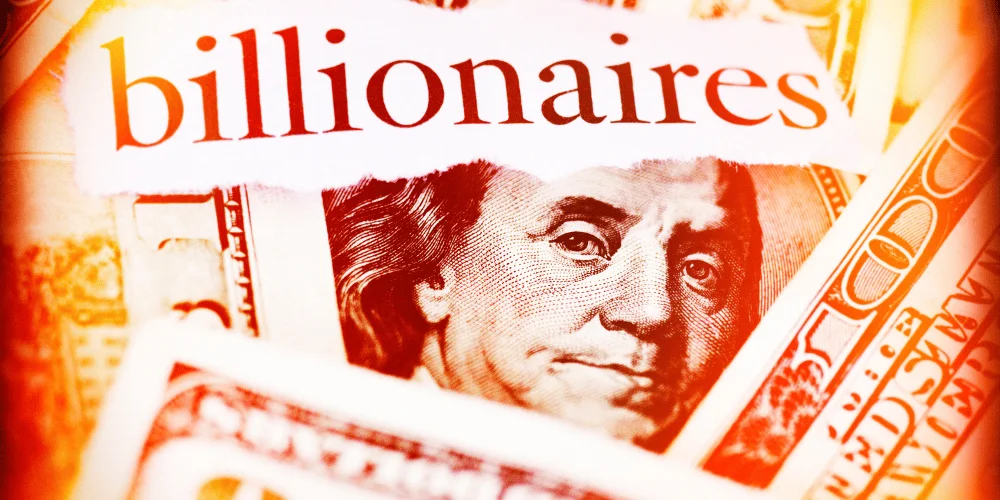Greens Push for a Billionaires’ Tax to Target Australia’s Wealthiest
Anúncios
Introduction
A bold and ambitious proposal has been put forward by the Australian Greens, advocating for the introduction of a “billionaires’ tax” targeting the nation’s wealthiest individuals.
This groundbreaking initiative, projected to generate approximately 25 billion over the four year period.
1 billion would face a 6% annual tax on their wealth, ensuring the ultra-wealthy contribute more equitably to the nation’s fiscal needs.
The Greens argue that the current system disproportionately benefits the richest Australians, leaving many others behind, and see this tax as a necessary step toward creating a fairer society.
The proposal has sparked significant debate, with proponents praising it as a long-overdue measure to tackle systemic wealth inequality.
They argue that redistributing a portion of this wealth could fund critical public infrastructure, support low-income households, and invest in renewable energy projects, fostering a more inclusive and sustainable economy.
However, critics, including business leaders and conservative policymakers, warn of potential economic repercussions.
They argue the tax could discourage investment, drive wealthy individuals to relocate, and stifle innovation.
Additionally, concerns have been raised about administrative challenges, such as accurately valuing assets and ensuring compliance. Despite these criticisms, the Greens remain committed, citing international examples like Norway and Switzerland as proof that wealth taxes can be effective and equitable.
The proposal continues to fuel discussions on wealth redistribution and economic fairness in Australia.
A bold proposal has been put forward by the Greens to impose a “billionaires’ tax” on Australia’s wealthiest individuals.
This initiative, which is projected to generate approximately $25 billion annually over the next four years, is being promoted as a way to address economic disparity and fund essential public services.
The proposal has sparked significant debate, with proponents emphasizing social equity while critics warn of potential economic consequences.

Key Aspects of the Billionaires’ Tax Proposal
Tax Structure and Rate
Under this policy, approximately 150 Australian billionaires would be subject to a 10% tax on their net wealth each year.
This tax aims to create a more equitable financial landscape by redistributing a portion of the immense fortunes amassed by the nation’s wealthiest individuals.
Allocation of Revenue
The substantial revenue generated from this tax is expected to be allocated to several critical public welfare initiatives, including:
| 🔹 Benefit | 📄 Description |
|---|---|
| Medicare-subsidized dental care | Expanding healthcare access by covering dental treatments under the national Medicare system. |
| Free general practitioner (GP) visits | Ensuring that all Australians can access essential medical care without financial barriers. |
| Nationwide 50-cent public transport fares | Making public transport more affordable to ease the financial burden on daily commuters. |
Preventing Capital Flight
To deter billionaires from moving their assets offshore in an attempt to avoid taxation, the policy includes a 10% limit on capital flight.
This restriction aims to ensure that the targeted wealth remains within the country’s economy, supporting national growth rather than being redirected to tax havens.
Estimated Impact on High-Net-Worth Individuals
If implemented, this tax would have a significant financial impact on some of Australia’s most well-known billionaires:
- 💵Gina Rinehart, recognized as Australia’s richest individual, would be required to contribute approximately $4 billion under the new tax structure.
- 💵Harry Triguboff, founder of Meriton and one of the country’s wealthiest property developers, would face an estimated $2.6 billion tax bill.
- 💵Other prominent billionaires such as Anthony Pratt, Clive Palmer, and Mike Cannon-Brookes would also be affected, with their financial contributions expected to be substantial.
Parliamentary Budget Office (PBO) Analysis
The Parliamentary Budget Office (PBO) has conducted an independent review of the proposed tax, estimating that it could increase government revenue by $24.8 billion over four years.
However, the analysis also highlights several key challenges and potential obstacles to successful implementation:
Implementation Costs and Compliance Measures
- 💵The Australian Taxation Office (ATO) would require approximately $327.1 million in the 2024-25 financial year to implement compliance measures and establish a National Wealth Register to track billionaire assets effectively.
- 💵Additional legal and administrative frameworks would need to be put in place to monitor wealth accumulation and tax payments accurately.
Risk of Tax Avoidance Strategies
- 💵High-net-worth individuals may employ sophisticated financial strategies to minimize their tax liabilities, including offshore investments, legal disputes, and restructuring their wealth to appear less taxable.
- 💵Legal challenges against the tax could delay revenue collection or reduce the anticipated earnings from the policy.
Economic Implications
- 💵The PBO warns that this tax could discourage domestic investment, as billionaires may reduce their capital injections into local businesses and infrastructure projects.
- 💵It remains uncertain whether institutional investors such as pension funds, sovereign wealth funds, or large corporations would compensate for any potential reduction in billionaire-led investments.
Statements from the Greens
Adam Bandt’s Perspective
Adam Bandt, leader of the Greens, has positioned this policy as a necessary measure to ensure billionaires contribute fairly to the national economy.
He argues that in a wealthy country like Australia, essential services such as healthcare, housing, and education should be accessible to all citizens.
“In a wealthy country like ours, everyone should be able to afford the basics: a home, food, and world-class health and education”.
Bandt has emphasized that this election presents a once-in-a-generation opportunity to implement significant economic reforms.
With the possibility of a minority government, the Greens believe they are in a strong position to influence economic policies.
Economic Justice Spokesperson Nick McKim’s View
Nick McKim, the Greens’ economic justice spokesperson, has taken an even stronger stance, asserting that the current cost-of-living crisis is a political choice rather than an unavoidable economic reality.
He argues that extreme wealth accumulation should not exist alongside rising homelessness and economic hardship.
“People shouldn’t have to sleep in their cars”
McKim also criticizes major political parties, claiming they are reluctant to take on billionaires and large corporations due to their financial interests.
Public and Economic Reactions
Support for the Policy
Supporters of the policy argue that:
- 💵Wealth inequality in Australia has reached unsustainable levels, and billionaires should contribute more to public services.
- 💵Increased taxation on the ultra-wealthy would not only fund essential services but also improve social mobility and reduce financial stress for lower-income households.
- 💵Other nations, such as the U.S. and parts of Europe, have proposed similar wealth taxes, suggesting that this model could be viable.
Criticism and Concerns
Opponents of the policy raise several concerns, including:
- 💵A potential decline in business investment, as billionaires might choose to invest less in Australian ventures or relocate assets to avoid taxation.
- 💵Legal loopholes and tax avoidance tactics, which could reduce the effectiveness of the policy.
- 💵Possible unintended economic consequences, such as slower economic growth and reduced job creation.
Conclusion
The Greens’ proposal to implement a billionaires’ tax in Australia is a bold initiative aimed at addressing economic inequality and funding crucial public services.
While the potential revenue gains are substantial, concerns regarding enforcement, economic impact, and potential tax avoidance strategies remain significant hurdles.
As the debate continues, the policy’s feasibility and long-term effects on Australia’s economy and social structure will be closely scrutinized.
With the possibility of a minority government, the Greens may have an opportunity to push for economic reforms that challenge traditional approaches to wealth distribution.
Whether this policy succeeds in implementation or faces insurmountable obstacles remains to be seen, but its proposal has undoubtedly sparked a national conversation about wealth, taxation, and economic fairness.







